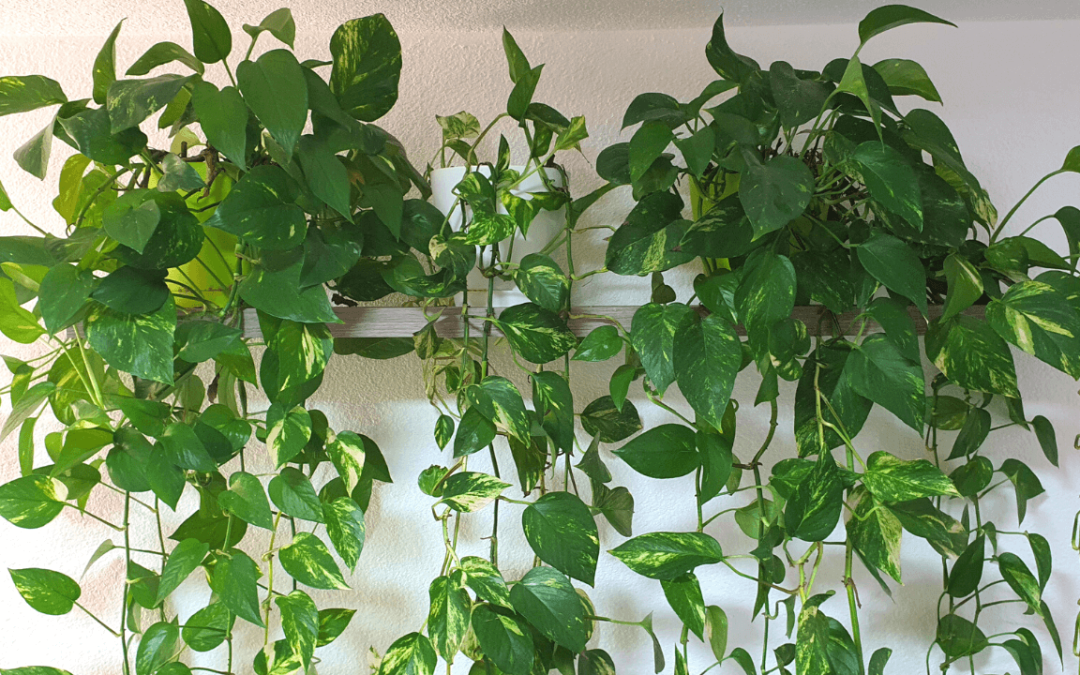Are you tired of breathing in toxic air and feeling like you’re suffocating in your own home? Don’t worry, I’ve got a solution for you! Introducing: plants. These green, leafy friends not only add a pop of color to your living space, but they also help filter out pollutants and toxins from the air. And let me tell you, devil’s ivy (also known as pothos or Epipremnum aureum) is a personal favorite of mine when it comes to improving indoor air quality.
Meet Wall-3, my trio of pothos plants that are strategically placed on my wall to create a green oasis. With the perfect amount of light and ample ventilation, these plants are able to thrive and help clean the air in my home office.
In this blog post, we’ll dive into the many benefits of using devil’s ivy to improve indoor air quality, how it works its magic, and some tips on how to care for and incorporate this versatile plant into your home. Trust me, your lungs (and your Instagram followers) will thank you.
What is devil’s ivy and how does it improve air quality?
Meet the plant that’s taking the world (or at least, the plant-loving community) by storm: devil’s ivy, also known as pothos, Ceylon creeper, Hunter’s robe, Ivy arum, Solomon Islands ivy, Taro vine, and (its scientific name) Epipremnum aureum. Native to Southeast Asia and the South Pacific, this popular houseplant is known for its attractive, heart-shaped leaves that come in a variety of shades, from green to yellow to white.
And let me tell you, there’s no shortage of pothos varieties to choose from. My personal favorite is the Golden Pothos, but there’s also the Marble Queen Pothos, Jessenia Pothos, Manjula Pothos, and Pearls and Jade Pothos, to name a few. With so many options, you’re sure to find a Pothos that matches your personal style (or at least, your plant aesthetic).
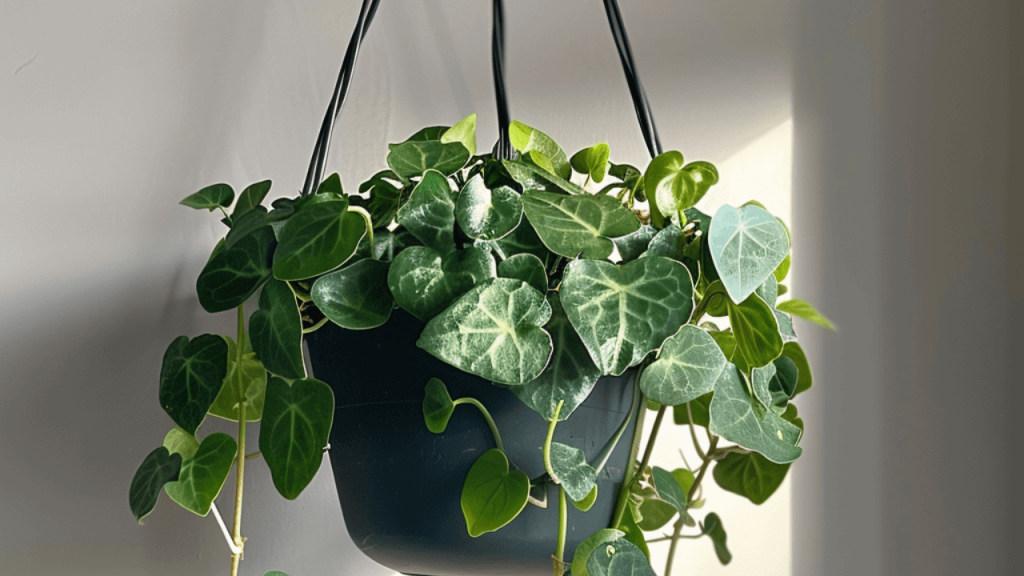
But aside from being a pretty face, devil’s ivy is also a champion at improving indoor air quality. So not only will it add some greenery to your space, it’ll also help keep the air clean and fresh. It’s a win-win situation!”
How does Devil’s Ivy (Epipremnum Aureum) remove toxins from your home?
Did you know that your beloved Devil’s Ivy (also known as pothos or Epipremnum Aureum) is a natural toxin-fighting superhero? It’s true! This plant uses a process called phytoremediation to absorb and break down harmful substances from the air, soil, or water through its leaves, roots, and microorganisms in the soil. In other words, it helps clean up contaminated environments, like the air in your home.
Pothos is particularly effective at removing volatile organic compounds (VOCs) like formaldehyde, xylene, and benzene, which are often found in household products and paints. These chemicals can have negative impacts on human health if inhaled over a long period of time, so it’s important to reduce their presence in our indoor environments.
When these toxic molecules are floating around in the air, the pothos plant absorbs them through tiny openings in its leaves called stomata. The leaves then convert the toxins into a food that the plant can use for energy, all while “cleaning” the air in the process. It’s like the plant is saying, “Hey, I’ll take those toxins off your hands and turn them into something useful. No problem!”
In addition to its toxin-fighting abilities, Devil’s Ivy is also a natural humidifier. It releases moisture into the air through the process of transpiration, which can be especially beneficial in dry environments where the air can become dry and stagnant. So not only is it cleaning the air, it’s also keeping things nice and humid. Talk about a multitasking marvel!
All in all, Devil’s Ivy is a great natural way to improve indoor air quality and reduce the levels of harmful chemicals in our homes and offices. It’s like having a personal, green-thumbed bodyguard for your health.
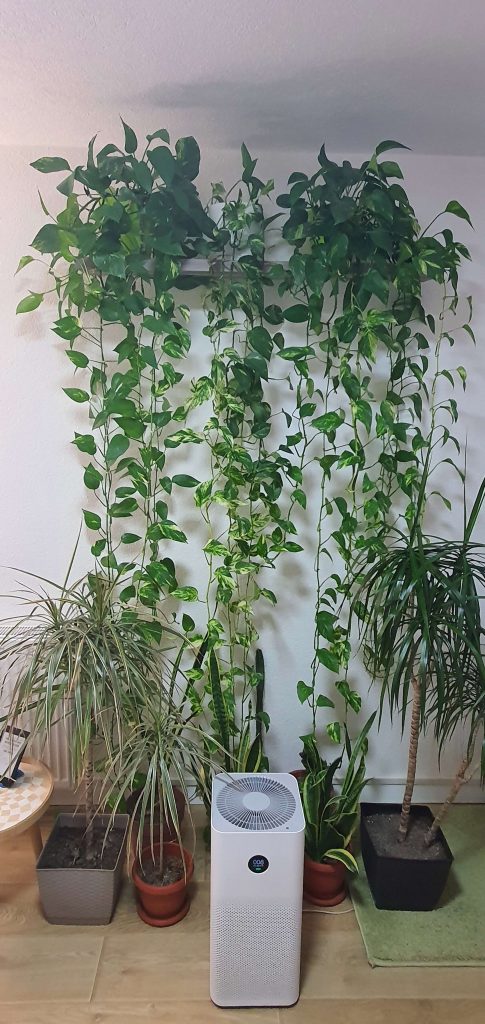
How to care for a Devil’s ivy plant so it can improve the air quality more effectively
Good news, plant parents! Caring for a Devil’s Ivy plant is a breeze, whether you’re a beginner or a green thumb pro. Just follow these basic care tips and your plant will be purifying the air in no time:
Water:
While Devil’s Ivies are pretty drought-tolerant, they still need to be watered when the soil feels dry to the touch. Make sure to water your plant thoroughly and allow the excess water to drain out of the pot. This is important to prevent root rot! If you notice the leaves getting soft or yellow, it’s time to water your plant. And remember, a well-watered Devil’s Ivy makes for an even better natural humidifier, improving the air quality around it. Fun fact: you might even spot water droplets on the tips of the leaves!
Sunlight:
Wall-3 (aka my 3 Pothos plants) don’t like direct sunlight as it can turn their leaves yellow or even burn them. Instead, they prefer bright but indirect sunlight. While they can tolerate low light levels, they’ll thrive and produce more vibrant leaves in moderate to bright indirect light. And don’t worry, even without direct sunlight, your Devil’s Ivy will still be able to photosynthesize, converting any available light source into chemical energy and producing more oxygen for better air quality. Another fun fact: Pothos leaves will always turn towards the light!
Fertilizing:
You might not need to fertilize your Devil’s Ivy if you repot it often, but it will benefit from fertilization during the growing season in spring and summer. Use a balanced liquid fertilizer at half strength every three weeks, and a granulated fertilizer once in spring and late summer. In the fall and winter, reduce the frequency of fertilizing to once every two months. Fertilizing helps give your plant strength and makes the air purifying process (called phytoremediation) more effective.
Propagation:
Want more Pothos plants? No need to buy more – just propagate them from stem cuttings! It’s a simple three-step process: cut a stem with at least a few leaves, remove the leaves closest to the cut, and place the stem in a jar of water until roots form. Then, transfer it to average soil with good drainage.
By following these basic care tips, you’ll be able to enjoy the beauty and air-purifying benefits of a healthy Devil’s Ivy plant in your home.
Tips for strategically incorporating devil’s ivy into your home for better air quality.
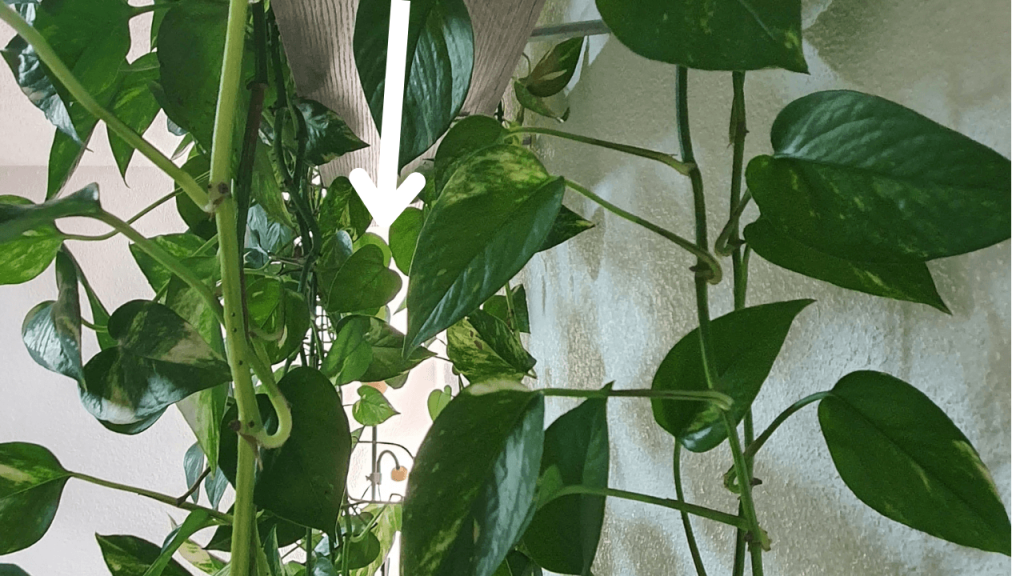
Now that you’re a pro at taking care of your Epipremnum Aureum, it’s time to get strategic with its placement in your home. After all, you want it to be as effective as possible at producing oxygen and filtering the air.
Displaying the plant:
As a trailing vine, devil’s ivy is perfect for hanging baskets. You can also place it on indoor stairs or terraces, but be sure to keep its growth in check. Or, if you have a bare wall or empty shelf, why not create a living wall like I did? I had an empty wall with the perfect amount of sunlight, so I placed a shelf a few inches away from the wall (for double the purifying effect) and placed my three pothos plants on it. I like to call them Wall-3.
Choosing the right location:
When selecting a spot for your devil’s ivy, be sure to consider the amount of light it will receive. It prefers bright but indirect sunlight, so a nearby window is the ideal location.
What plants go well with devil’s ivy:
If you want to take your air purification to the next level, consider pairing your devil’s ivy with other air-purifying plants such as snake plants, spider plants, and peace lilies. They all require the same amount of sunlight, moisture, and humidity, and you can water and fertilize them at the same time.
By following these tips and using a little bit of creativity, you can easily incorporate devil’s ivy into your home and enjoy the air-improving benefits it has to offer
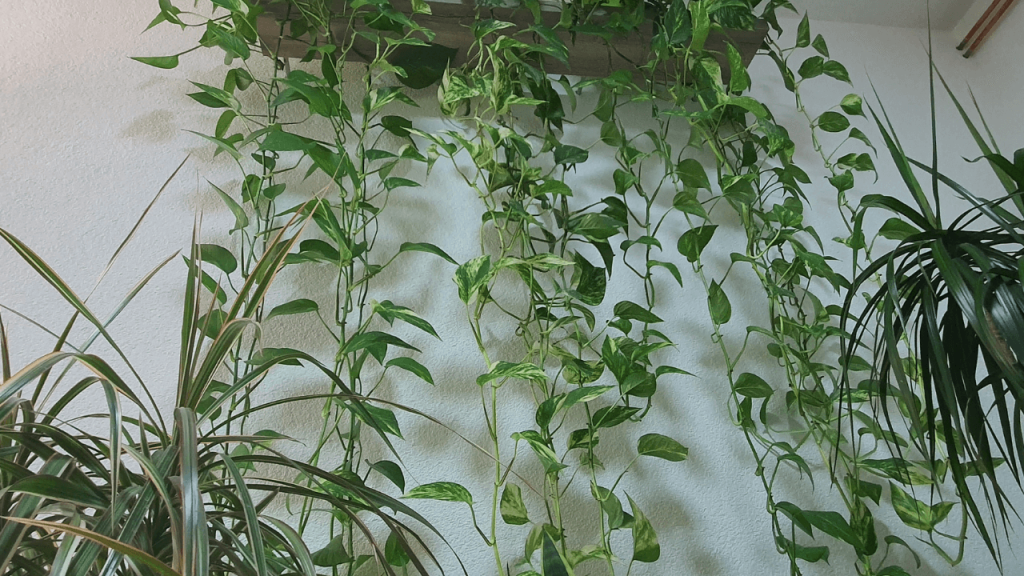
Conclusion
In conclusion, devil’s ivy is a versatile and effective plant for improving indoor air quality. Not only does it look beautiful with its heart-shaped leaves in a variety of shades, it also uses phytoremediation to absorb and break down harmful substances from the air, soil, or water. It is particularly effective at removing volatile organic compounds like formaldehyde, xylene, and benzene, and it can also act as a natural humidifier by releasing moisture into the air through transpiration.
To get the most out of your devil’s ivy’s air-purifying abilities, be sure to place it in a location with bright but indirect sunlight and water it regularly. You can also pair it with other air-purifying plants like snake plants, spider plants, and peace lilies for even more clean air. And with a little bit of TLC, your devil’s ivy will thrive and keep your home’s air fresh and clean. So go ahead and bring some greenery into your life – your lungs will thank you.

